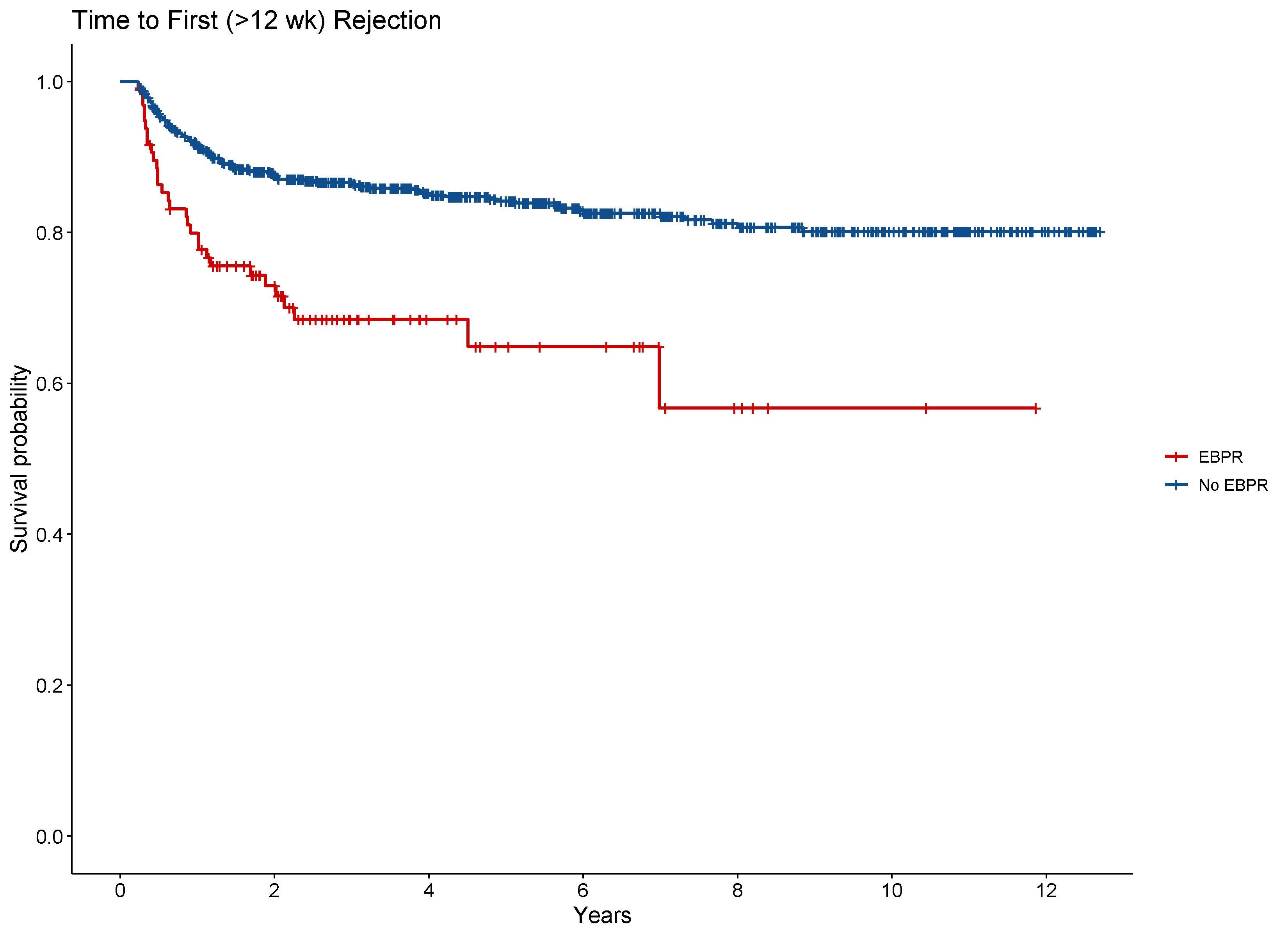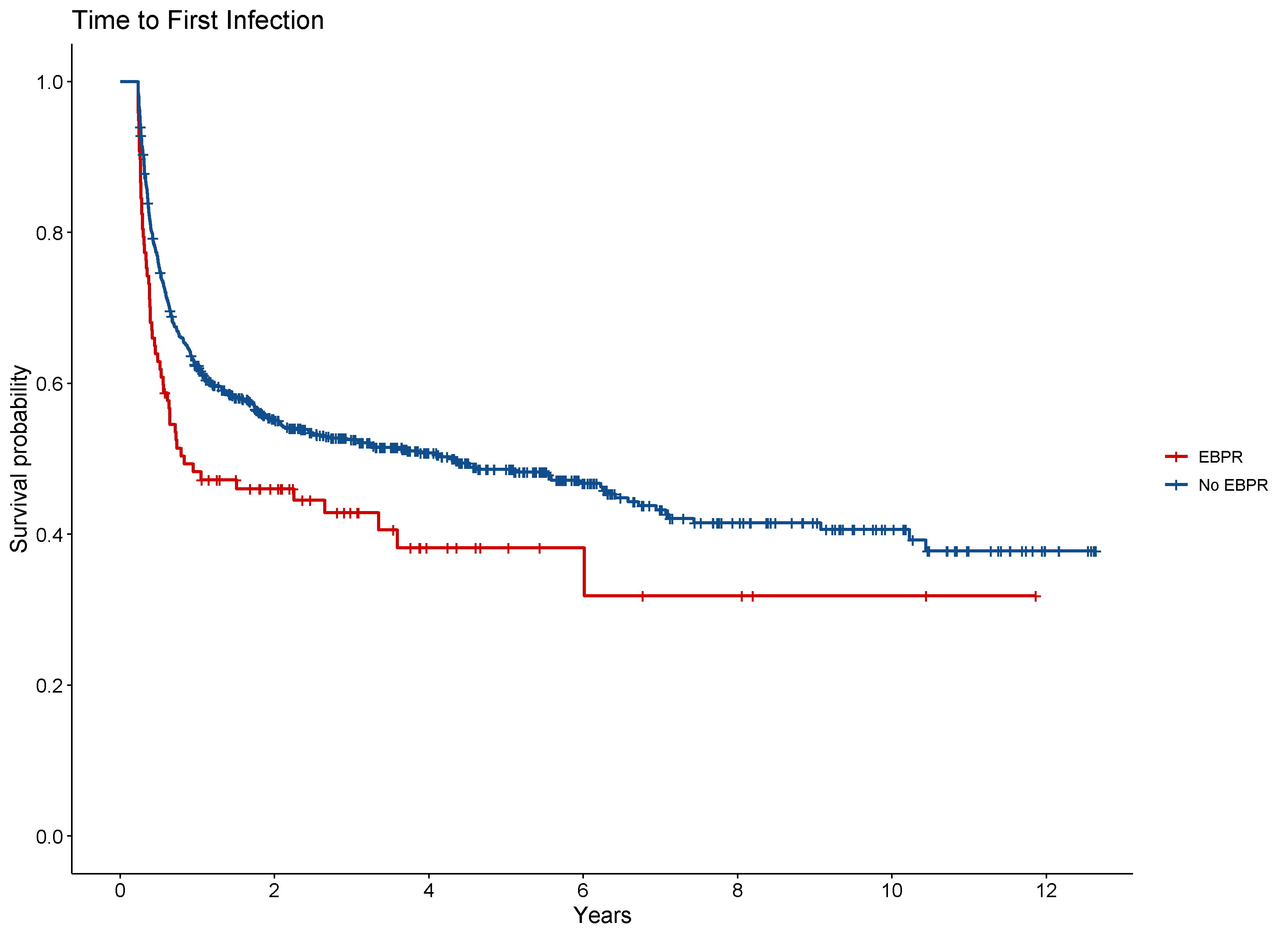Effect of Early Biopsy-Proven Rejection on Liver Transplant Outcomes
Surgery, University of Wisconsin, Madison, WI
Meeting: 2021 American Transplant Congress
Abstract number: 335
Keywords: Biopsy, Liver grafts, Rejection
Topic: Clinical Science » Liver » Liver: Immunosuppression and Rejection
Session Information
Session Name: Post Liver Transplant Management and Complications
Session Type: Rapid Fire Oral Abstract
Date: Tuesday, June 8, 2021
Session Time: 4:30pm-5:30pm
 Presentation Time: 4:35pm-4:40pm
Presentation Time: 4:35pm-4:40pm
Location: Virtual
*Purpose: Existing literature offers conflicting conclusions about whether early acute cellular rejection influences long-term outcomes in liver transplantation.
*Methods: We retrospectively collected donor and recipient data on 813 adult, first-time liver transplants performed at a single center between 2009 and 2019. We divided this population into two cohorts based on the presence of early biopsy-proven acute cellular rejection (EBPR) within the first 12 weeks post-transplant and compared outcomes (overall survival, death censored graft survival (DCGS), infection and long-term rejection rates) between the groups. Kaplan-Meier estimates were used to assess time to first event with p value < 0.05 for significance.
*Results: Of the 813 liver transplants, 97 (12%) met inclusion criteria of EBPR. Donor and recipient characteristics did not differ between patients with and without EBPR (Tables 1).
| Characteristic | Early biopsy-proven rejection (n=97) | No early rejection (n=716) | p-value |
| Recipient age | 54 (52-57) | 55 (55-56) |
0.41
|
| Recipient female | 28% (27) | 30% (231) |
0.41
|
| Recipient BMI | 31 (29-32) | 30 (29-31) |
0.36
|
| Use of induction agent | 15% (15) | 19% (133) | 0.57 |
| Donor age | 45 (43-48) | 45 (44-46) |
0.68
|
| Donor female | 43% (42) | 39% (276) | 0.37 |
| Donor BMI | 29 (28-31) | 28 (28-29) | 0.21 |
Recipients with EBPR had similar overall survival compared to patients without EBPR (p=0.29), but had inferior one year death-censored graft survival (95.8% for EBPR vs. 98.7% for no EBPR, p<0.05). EBPR was also associated with decreased time to first episode of late (>12 weeks post-transplant) rejection (p<0.0001, Fig 1).
Recipients with EBPR had increased rates of bacterial and viral infection (p<0.05, Fig 2).
*Conclusions: EBPR after liver transplant is associated with inferior death-censored graft survival, increased susceptibility to late rejections, and increased vulnerability to infection. Identifying strategies to mitigate EBPR may lead to improved long-term outcomes after liver transplantation.
To cite this abstract in AMA style:
Aufhauser DD, Marka N, Stalter L, Levenson G, Al-Adra D, Foley DP. Effect of Early Biopsy-Proven Rejection on Liver Transplant Outcomes [abstract]. Am J Transplant. 2021; 21 (suppl 3). https://atcmeetingabstracts.com/abstract/effect-of-early-biopsy-proven-rejection-on-liver-transplant-outcomes/. Accessed December 22, 2025.« Back to 2021 American Transplant Congress


